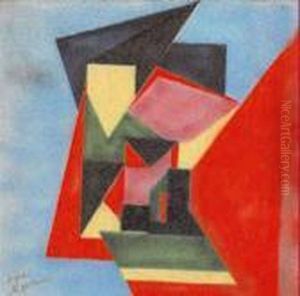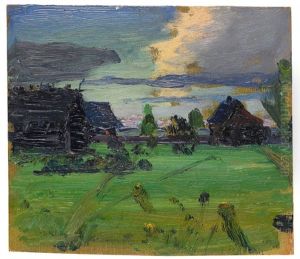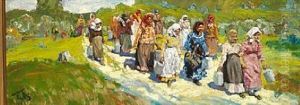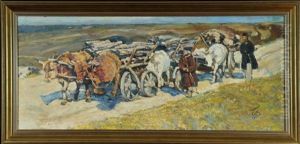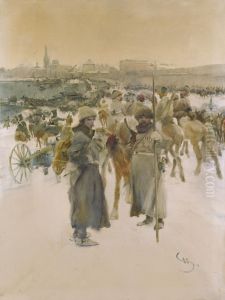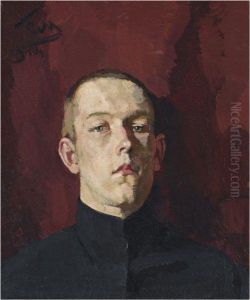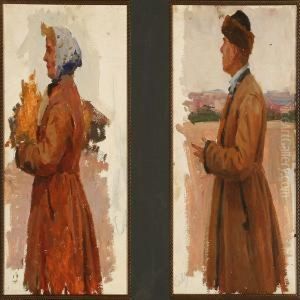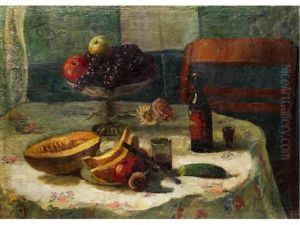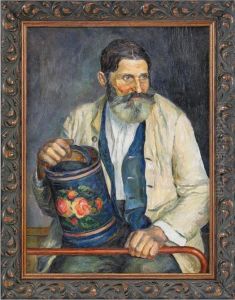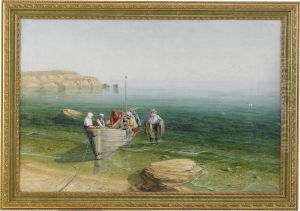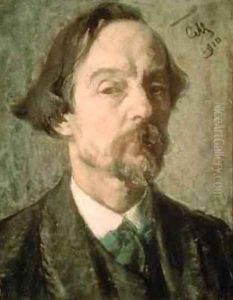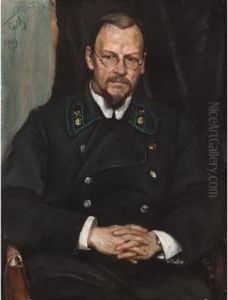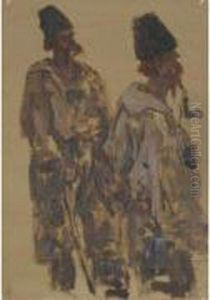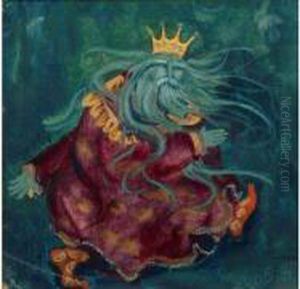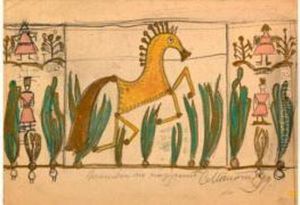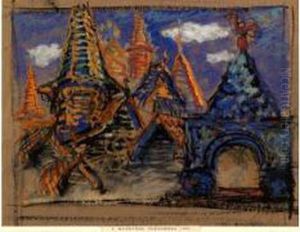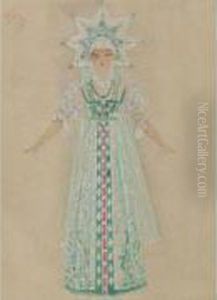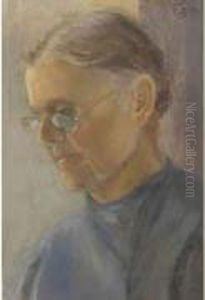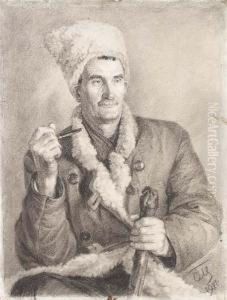Sergei Vasilievich Malyutin Paintings
Sergei Vasilievich Malyutin was a Russian painter, architect, and stage designer, best known as the designer of the first Russian matryoshka doll. Born on March 17, 1859, in Moscow, Russia, Malyutin was deeply involved in the Russian Revival movement, which sought to rediscover and invigorate Russian cultural heritage and folk art. His artistic career was significantly influenced by this movement, and it is evident in the themes and styles of his works.
Malyutin graduated from the Moscow School of Painting, Sculpture and Architecture, where he later taught as a professor. Throughout his career, he was not only a painter but also an architect and stage designer, contributing significantly to various fields of Russian art and culture. His works often depicted Russian folklore, history, and everyday life, showcasing his deep appreciation and love for his country's traditions.
The creation of the first matryoshka doll in 1890 is arguably Malyutin's most famous contribution to Russian art. The idea was inspired by a set of Japanese nesting dolls. Malyutin designed the first set, which featured a traditional Russian woman wearing a folk costume as the outer doll, with a series of smaller dolls nested inside, each uniquely painted. This first set was crafted by Vasily Zvyozdochkin, a toy maker, and was presented at the Exposition Universelle in Paris in 1900, where it received widespread acclaim.
Aside from his work with matryoshka dolls, Malyutin was involved in the design and decoration of several buildings and interiors, often incorporating traditional Russian motifs and techniques. His architectural works include contributions to the Talashkino estate in Smolensk, which was a center for the Russian Revival style, and the design of various churches and public buildings.
Throughout the early 20th century, Malyutin continued to be active in the arts, participating in exhibitions and taking on various projects. However, his work and visibility declined after the Russian Revolution of 1917, as the new Soviet regime promoted a different aesthetic and cultural direction. Despite this, Malyutin's legacy lived on through his contributions to Russian folk art and the enduring popularity of the matryoshka doll, which remains a symbol of Russian culture worldwide.
Sergei Vasilievich Malyutin passed away on July 6, 1937, leaving behind a rich legacy that bridged traditional Russian folk art and modern artistic movements. His works continue to be celebrated for their creativity, depth, and profound connection to Russian heritage.
